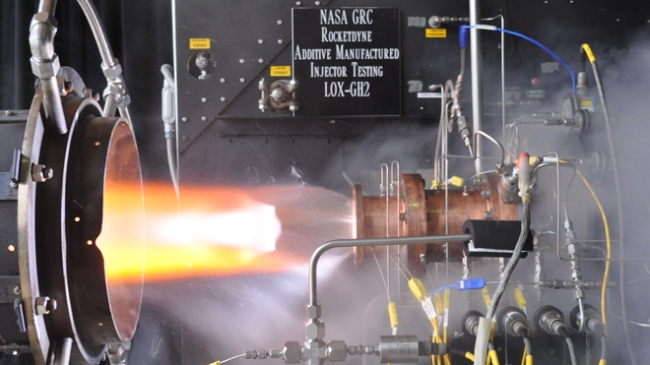NASA and Aerojet Rocketdyne designed and fabricated a key part for a rocket engine with a 3D printer, shaving six months and 70 percent off the cost of production. A successful test of the component, a rocket injector assembly that delivers liquid oxygen and hydrogen into the engine’s combustion chamber, may lead to more efficient manufacturing in the future.
“NASA recognizes that on Earth and potentially in space, additive manufacturing can be game-changing for new mission opportunities, significantly reducing production time and cost by ‘printing’ tools, engine parts or even entire spacecraft,” said Michael Gazarik, NASA’s associate administrator for space technology in Washington. “3D manufacturing offers opportunities to optimize the fit, form and delivery systems of materials that will enable our space missions while directly benefiting American businesses here on Earth.”
To build the injector, the company used high-powered laser beams to melt and fuse fine metallic powders into three dimensional structures, rather than fashioning parts the traditional way with machines and manual labor.
This type of injector manufactured with traditional processes would take more than a year to make, but with these new processes it can be produced in less than four months, with a 70 percent reduction in cost, the company said.
“Rocket engine components are complex machined pieces that require significant labor and time to produce. The injector is one of the most expensive components of an engine,” said Tyler Hickman, who led the testing at Glenn.
The Air Force Research Laboratory at Edwards Air Force Base, Calif. also participated.
3D printing — or additive manufacturing — has exploded in popularity over the past few years, promising advances in everything from dentistry and medical care to space exploration and mining.
Originally posted on Fox News: http://www.foxnews.com/science/2013/07/15/nasa-tests-3d-printed-rocket-engine/print#ixzz2ZFoCLOoB

